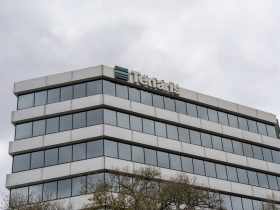Performance
The Fund (MUTF:TGCEX, I Share) generated a net return of 7.49% during the second quarter, underperforming the Russell 1000® Growth Index return of +8.33%. Relative underperformance was primarily due to negative security selection effects (primarily in the information technology, consumer discretionary and healthcare sectors). YTD through the first half of CY24, The Fund (I Share) generated a return of +22.04%, outperforming the Russell 1000® Growth Index return of +20.70%. Outperformance was driven primarily by positive security selection effects.
Investment Environment
Equity markets generally moved higher in the second quarter. The NASDAQ advanced 8.3%, the S&P 500 (SP500,SPX) +4.3%, while the DJIA declined 1.7%. For the first half of 2024, the S&P 500 is +15.3% on a total return basis and continues to ratchet higher in the face of slowing economic growth. The price of crude oil was relatively flat during the quarter (-0.2%) but has increased 17.3% in 2024. For the quarter, gold was up 3.5% and +9.7% YTD. Signs of consumer weakness are emerging (discretionary spending, housing) and consumer sentiment is challenged (University of Michigan Consumer Sentiment Index dropped to 68.2 in June). The labor market is beginning to cool (4.1% in June unemployment rate, a 2½ year high), giving the Federal Reserve (Fed) cover to potentially cut rates in September. It is critical that the Fed does not loosen monetary policy too quickly to avoid the “stop-start” scenario of the 1970s. Globally, other central banks have begun their easing cycles (Swiss National Bank, Bank of Canada, European Central Bank), and it will be interesting to discern whether the Fed remains “data dependent” in the face of a U.S. Presidential election in the back half of the year. As the Fed has remained on hold, the USD has strengthened relative to several other currencies. The 2yr UST (US2Y) /10yr UST (US10Y) yield curve has been inverted for over two years (longest tenure on record), and historically this has almost always led to a recession. Geopolitical tensions remain high (China-U.S., Ukraine/Russia, Iran/ Israel) as we enter the important second-quarter corporate earnings season.
Sector Weightings
Including the contribution of sector allocation and security selection, our information technology and consumer discretionary weightings hurt relative results most and our industrials and consumer staples weightings most positively impacted relative performance during 2Q24.
Security Selection*
Our strongest performance during the period came from the information technology and communication services sectors. Shares of Nvidia Corporation (NVDA; 14.18%**) continued their ascent after reporting strong quarterly results. Revenue of $26 billion (+262% YoY) topped consensus expectations and the company once again provided forward guidance well ahead of consensus. Management noted the demand for H200 and Blackwell exceeds supply, and that may remain the case well into next year. We believe the company’s move to a one-year product launch cadence (from two previously) is helping to smooth supply/demand imbalances and assuage air pockets typically seen between product launches in the semiconductor industry.
The company also announced a 10-for-1 stock split. We believe fundamentals remain strong and the company continues to fire on all cylinders. When we first purchased shares of NVDA almost six years ago, we believed the company was the beneficiary of multiple secular tailwinds and could become the “Wintel” of AI and Machine Learning. We believe our thesis is playing out as the company becomes a broad-based hardware/software platform and AI infrastructure company. Shares of Alphabet Inc. (GOOG; 7.20%**) moved higher after delivering strong quarterly results. Driven by strength in search (+15% YoY) as well as cloud (+29% YoY), the company beat consensus expectations, growth accelerated QoQ, and the company announced an additional $70 billion share repurchase authorization as well as the initiation of a dividend. As an “AI first company since 2016,” the company has leaned into AI and Gen-AI enhancements and management noted a clear path to AI monetization via advertisements, cloud services and subscriptions. Capex was $12 billion in the quarter (+90% YoY) and management indicated it expects to invest at or above that quarterly amount over the course of the year. Despite stepped up investment, we are encouraged by management’s tone around efficiency and shareholder returns. We remain constructive on shares.
Our weakest relative performance during the period came from the healthcare and consumer discretionary sectors. Shares of DexCom, Inc. (DXCM; 1.85%**) underperformed in June due to some investors questioning the ramp of the company’s upcoming commercial launch of Stelo, an over-the-counter 15-day cash-pay wearable Continuous Glucose Monitoring device targeted towards Type 2 diabetes patients currently not taking insulin. At DXCM’s analyst event at the American Diabetes Association’s conference held in late June, management did not provide pricing for Stelo, but we believe management’s Stelo sales estimate in 2024 (~$40 million) may be conservative. Though shares have been volatile over the past year, our thesis remains intact that DXCM possesses a strong product advantage within an expanding end market. We remain constructive on shares. In the consumer discretionary sector, shares of Ulta Beauty, Inc. (ULTA; 1.18%**) dropped in the second quarter. In mid-March the company reported results for its fiscal fourth quarter 2023, and while earnings and comparable sales estimates beat consensus expectations, management’s guidance was back-half loaded, concerning some investors. Then at an investment conference in early April (three weeks later), management noted a slowdown across price points and segments with growth decelerating much quicker than previously anticipated, further pressuring ULTA’s share price. Understandably, management’s credibility in forecasting its business has been hit. In late May, the company’s fiscal first quarter 2024 results were released and EPS topped consensus estimates, with comp trends similar to those experienced the prior quarter. Accordingly, management elected to lower forward revenue, EPS, operating margin, and comp guidance. On a valuation basis, the stock is relatively inexpensive on an earnings basis given the industry and company-headwinds faced by ULTA. As an off-mall retailer with a loyal customer base (over 42 million Ulta Rewards members), we recognize the current challenges and are closely monitoring the situation.
Representative Buys (Ticker; Sector)*
Cadence Design Systems, Inc. (CDNS; Information Technology) (1.53%**) – Cadence provides EDA (Electronic Design Automation) software, hardware, and IP blocks used by engineers to design semiconductors. Long-wave secular trends (Generative AI, hyperscale computing, autonomous driving, 5G) are driving demand for increasingly complex semiconductors and CDNS is a key enabler in the design of these chips. Cadence is one of only two companies offering full-design flow solutions leading to sizable market share, a sticky customer base and a rational competitive landscape. Healthy end market growth, constant demand for more sophisticated solutions and pricing power lead to attractive top-line growth, and the increasingly subscription-based business model (provides high revenue visibility with ~85% recurring revenues) further enable attractive economics. We believe the current share price does not reflect the long-term earnings power of the company.
Shopify Inc. (SHOP; Information Technology) (1.62%**) – Shopify Inc. is a global cloud-based online commerce company platform that provides tools and services to over two million businesses in over 175 countries. Its platform enables merchants to manage products, fulfill and ship orders, build and enhance customer relationships, leverage analytics, manage payments, access financing, as well as buy advertising through its platform. Shopify (currently the #2 online e-commerce platform in the U.S.) operates in two segments: Subscription Solutions (~1/4 of revenues) and Merchant Solutions (~3/4 of revenues). We are attracted to the company’s accelerating market share capture, capital-light business model, pricing power and leverage to the secular trend of Direct-to-Consumer retail. We have followed Shopify closely for years and believe the current share price does not reflect the long-term margin expansion and earnings power of the company.
GE Aerospace (GE; Industrials) (0.70%**) – GE Aerospace (formerly General Electric Company after the April 2024 spinoff of its power and renewable assets business) is the largest aircraft engine supplier in the world. At any given time, its engines power three out of every four flights. The company operates in two segments: Commercial Engines & Services (~75% of revenues and ~86% of profits) and Defense & Propulsion Technologies (~25% of revenues and ~14% of profits). We are attracted to the oligopolistic aerospace market as it is characterized by limited competition and high barriers to entry (capital intensive, safety regulations, R&D/IP design expertise critical). The business model is the classic “razor-razor blade” model whereby GE makes little to no profit on the initial engine sale, and makes its money on aftermarket service, resulting in long duration, recurring cash flows. Industry dynamics are currently favorable with OEM demand exceeding supply (capacity has not yet recovered to pre-pandemic levels), and with ~80% of global aircraft past the five-year warranty window and needing to fly longer, we believe GE’s highly profitable aftermarket services business is poised to benefit. We believe the current stock price does not adequately reflect the strength of GE’s business model, balance sheet, management team and free cash flow profile of the company.
Representative Sells (Ticker; Sector)*†
NIKE, Inc. (NKE; Consumer Discretionary) – Nike, the largest seller of athletic footwear and apparel in the world, sells its products to consumers through Nike-owned retail stores, digital platforms, retail accounts and a mix of independent distributors, licensees and sales representatives in virtually all countries around the world. When we first purchased shares, we were attracted to the company’s digital transformation and mix shift to more direct and digital distribution channels, which we believed could create a better flywheel with more customer data enabling better product and more targeted marketing. With fewer intermediaries, Nike would also enjoy better economics through more full-pricing selling at better margins. Due to a series of management missteps, lackluster product innovation over the past few years, as well as increasing competition, we elected to sell our shares to fund more attractive ideas.
The Charles Schwab Corporation (SCHW; Financials) – Charles Schwab is a financial services company that primarily provides securities brokerage, money management and financial advisory services to individual investors and independent investment advisors. When we first purchased shares, we were attracted to the company’s scale, technology, low cost offering and asset gathering capabilities. After nearly a decade of ownership though, the growth rates of the business have decelerated to the lower end of our portfolio and the stock has approached our long-term price target. Accordingly, we have been using the position as a source of cash and recently sold the last of our position to fund ideas we believe provide more upside over the next three-to-five years.
Market Outlook
“Keegan Bradley? Really?” So began a recent team meeting. For non-golf fans, Keegan Bradley was recently announced as the surprise pick for 2025 U.S. Ryder Cup team captain. Established in 1927, the biannual Ryder Cup event is a series of golf matches over three days between the U.S. and Europe and is viewed as the preeminent golf team event in what is otherwise a very individual sport. While largely a ceremonial golf event (no prize money, 17″ trophy awarded to the winning team), making the team is a career goal for many professional golfers. As captain, Mr. Bradley will set the tone for the U.S., and will be presented with several difficult decisions over the next year, including selecting his players. As our team discussed the challenges of being a Ryder Cup captain, we began to see parallels to portfolio management. The captain (PM) must pick the players (stocks), optimize the team (portfolio construction) and consider unknowns well in advance like the potential weather conditions (market environment).
Player (Stock) Selection
Although six of the 12 players on the U.S. team automatically qualify via points earned, the Ryder team captain is charged with picking the remaining six. Many times those remaining players are consensus picks, but we are reminded of the payoff from a non-consensus pick in 2021 by Captain Steve Stricker. He passed over two higher-ranked players (Patrick Reed and Webb Simpson) to select a 25-year old named Scottie Scheffler. While Reed and Simpson had won numerous times on tour (and each had won a major championship), Scheffler had yet to card a professional win. We speculate Mr. Stricker’s decision had less to do with what Scheffler had done, and more to do with his potential. This non-consensus pick paid off as Scheffler won two matches, tied one and is now the #1 ranked player in the world with 12 career wins, including two major championships. We seek to emulate Captain Stricker by focusing more on a business’s potential than just recent results and looking for the non-consensus opportunities.
We measure business potential across two primary dimensions, business model advantage (‘BMA’) and total addressable market (‘TAM’). The greater and more sustainable the competitive advantage and the larger the end market opportunity available to perpetuate those advantages, the greater the potential for long-term value creation. While we are bullish on the potential of all the businesses we own, we’d characterize members of the Magnificent 7 as either automatic qualifiers or consensus picks in Ryder Cup terms. Yes, they form a key part of the portfolio, but alpha is much more likely to be driven by our remaining team picks over the coming years. As we have said before, we view our portfolio as so much more than the Magnificent 7.
Team (Portfolio) Construction
In selecting the players, the captain must also consider team construction. Ideally, the captain will blend the strengths, weaknesses, and personalities of a diverse group and will have an eye on the present (winning now) as well as the future (experience for future Ryder Cups). A good captain recognizes that a Scottie Scheffler can be a good bet if the team is also stacked with veterans like then-37-year old Dustin Johnson (who proceeded to go 5-0-0 in 2021). Each player on the team has a role to play, just as each stock in our portfolio provides different exposures, growth profiles and macro-economic sensitivities. Blending companies with businesses less correlated to GDP to a stable of offensive growth stocks has been an important element of our portfolio construction over the past fifteen years+. However, we also seek to combine businesses with different end market demand drivers, stages of profitability and ranges of outcomes so we can enhance the probability of performing well today and in future years without requiring turnover of the entire portfolio. Stocks, just like players can have slumps and we believe it is important to not try to overmanage stocks seeing drawdowns if our conviction in the BMA and TAM remain high. Many of our most successful investments have experienced sharp periodic drawdowns before seeing outsized appreciation. As an investor once said to us,“Think of how many times over the past 15 years, you had to convince yourself not to sell the stock.”
We own five of the Magnificent 7 stocks and are comfortable with these team veterans. However, we anticipate that market indices will not always be so reliant on them for performance and that they are not immune from periodic slumps. Hence, we have a broad bench of other offensive and defensive positions to benefit from later waves of AI investment or other secular trends like Data as the New Currency, Cybersecurity, or the Electronification of Payments. We also have next generation winners ready to take more of the growth baton from the Magnificent 7 like Shopify outgrowing Amazon (AMZN; 6.43%**) in ecommerce or The Trade Desk (TTD; 1.97%**) surpassing the growth of GOOG and META (META; 3.28%**) in digital advertising. Like a good captain, we are positioning for both current and future performance.
Weather (Market) Conditions
While the captain (and PM) aims to stack the deck in their favor through player selection and team construction, variables like weather conditions can test some of those decisions when play begins. Adaptability and resiliency can become as important as skill or raw potential in such cases. Our approach, as referenced in our Q4 2023 letter, is to go with “all-mountain skis” rather than rely more heavily on our weather forecasting abilities. We can make adjustments as we go but our ultimate success is largely determined by the resiliency built into the portfolio before the weather turns. Do we have enough players that can play well in each potential weather scenario we can foresee? Do we have players that can be successful in multiple environments? That’s where we spend much of our time when overlaying the macro onto the portfolio construction process.
With this caveat that we are not overly anchored to a single macroeconomic outlook, what is the current weather forecast from our vantage point? The Fed remains “data dependent” and seemingly wants to avoid the “stop and go” policy of the 1970s. Inflation is continuing to cool, job openings have dropped meaningfully (~8 million, down from ~12 million in March 2022) but deterioration in employment is still modest, and GDP growth is still positive, but moderating in the U.S. (1Q24 +1.4% and trending to ~+1.5% in 2Q24). Against this backdrop, we believe June’s CPI (Consumer Price Index) print provides cover for the Fed to potentially ease in September. Fed Chair Powell noted in his recent testimony that “elevated inflation is not the only risk we face.” As we have stated in numerous prior commentaries, equities generally perform well during a “Fed pause” and the current period marks the second longest on record (only 2006-2007 longer). Once the Fed starts cutting though, the picture is mixed. After initial pullbacks, markets have continued to grind higher in cutting cycles like 1984, 1995 and 2019 when the economy avoided a recession, but the first cut often marks the beginning of more extended declines in periods where a recession is in the offing. We are keenly aware that the 2yr UST/10yr UST has been inverted for two years (longest tenure in recorded data), and historically this has almost always led to a recession.
Ultimately, just as we cannot predict whether Keegan Bradley will be able to produce a victory at Bethpage Black in 2025 and replicate Steve Stricker’s success in 2021 (weather was calm and the U.S. Ryder Cup team routed Europe 19-9), we cannot predict near-term market gyrations. Accordingly, we do not make binary bets on any one scenario, even our base case. While we consider the current market environment, the primary driver of our portfolio returns has always been the micro fundamentals of each of the businesses we own. Whether or not the micro fundamentals are more (an offensive position) or less (a defensive position) correlated with GDP, we seek businesses with similarly differentiated business model quality and growth opportunities. The value of the longer-term potential of these businesses is more important than how they may perform over the next several quarters. We readily admit that our macro perspective has routinely led us to trade off some potential upside from purely pro-cyclical positions to dampen enduring downside risk with businesses that benefit from less correlated fundamentals. But, with a pending U.S. Presidential election and potential Fed pivot, the weather can change in a heartbeat.
As always, we remain truly grateful for your trust and support,
Brandon D. Bond, CFA Managing Director Portfolio Manager Equities
Brian M. McNamarak, Managing Director Analyst and Portfolio Specialist Equities
Robert J. Park, CFA Managing Director Senior Analyst Equities
Craig C. Blum, CFA Group Managing Director Senior Portfolio Advisor Equities
|
Please see additional disclosures on the following page(s). * It should not be assumed that an investment in the securities listed was or will be profitable. **Portfolio securities are stated as a percentage of the Fund’s total net assets including cash and cash equivalents as of June 30, 2024. † Not held by the Fund as of June 30, 2024. The performance data presented represents past performance and is no guarantee of future results. Returns assume all income items are reinvested. Current performance may be lower or higher than the performance data presented. Performance data current to the most recent month end is available on the Fund’s website at TCW.com. Investment returns and principal value will fluctuate with market conditions. The value of an investment in the Fund, when redeemed, may be worth more or less than its original purchase cost. You should consider the investment objectives, risks, charges and expenses of a mutual fund carefully before investing. A Fund’s Prospectus and Summary Prospectus contain this and other information about the Fund. To receive a Prospectus, please call 800-386-3829 or you may download the Prospectus from the Fund’s website at TCW.com. Please read it carefully. TCW Select Equities Fund IMPORTANT DISCLOSURE This material may include estimates, projections and other “forward-looking” statements. Actual events may differ substantially from those presented. TCW assumes no duty to update any such statements. This material reflects the current opinions of the author but not necessarily those of TCW and such opinions are subject to change without notice. TCW, its officers, directors, employees or clients may have positions in securities or investments mentioned in this publication, which positions may change at any time, without notice. This material may include estimates, projections and other “forward-looking” statements. Actual events may differ substantially from those presented. TCW assumes no duty to update any such statements. All projections and estimates are based on current asset prices and are subject to change. Performance Detail as of June 30, 2024
Annual fund operating expenses as stated in the Prospectus dated March 1, 2024, excluding interest and acquired fund fees and expenses, if any. The performance data presented represents past performance and is no guarantee of future results. Returns assume all income items are reinvested. Current performance may be lower or higher than the performance data presented. Performance data current to the most recent month end is available on the Fund’s website at TCW.com. Investment returns and principal value will fluctuate with market conditions. The value of an investment in the Fund, when redeemed, may be worth more or less than its original purchase cost. The annualized since inception return for the index reflects the inception date of the TCW Class I and Class N Share Funds, respectively. For period 7/1/1991- 6/30/2024; 2/26/1999-6/30/2024. Since inception returns include the performance of the predecessor limited partnership for periods before the Fund’s registration became effective. The predecessor limited partnership was not registered under the Investment Company Act of 1940 (“1940 Act”) and therefore, was not subject to certain investment restrictions imposed by the 1940 Act. If the limited partnership was registered under the 1940 Act, its performance may have been adversely affected. Effective March 1, 2024, the Fund’s investment advisor has agreed to waive fees and/or reimburse expenses to limit the Fund’s total annual operating expenses (excluding interest, brokerage, extraordinary expenses and acquired fund fees and expenses, if any) to 0.80% of average daily net assets with respect to Class I shares and 1.00% of average daily net assets with respect to Class N shares. The contractual fee waiver/expense reimbursement will remain in place through March 1, 2025 and before that date, the investment advisor may not terminate this arrangement without approval of the Board of Directors. Russell 1000® Growth Index– Measures the performance of the large-cap growth segment of the U.S. equity universe. It includes those Russell 1000 companies with higher price-to-book ratios and higher expected growth values. The index is not available for direct investment; therefore its performance does not reflect a reduction for fees or expenses incurred in managing a portfolio. The securities in the index may be substantially different from those in the Fund. S&P 500 Index– A capitalization-weighted index of 500 stocks designed to measure performance of the broad domestic economy through changes in the aggregate market value of 500 stocks representing all major industries. Source: TCW, FactSet, State Street B&T Index Disclosure London Stock Exchange Group plc and its group undertakings (collectively, the “LSE Group”). © LSE Group 2020. FTSE Russell is a trading name of certain of the LSE Group companies. Russell® is a trade mark(s) of the relevant LSE Group companies and is/are used by any other LSE Group company under license. All rights in the FTSE Russell indexes or data vest in the relevant LSE Group company which owns the index or the data. Neither LSE Group nor its licensors accept any liability for any errors or omissions in the indexes or data and no party may rely on any indexes or data contained in this communication. No further distribution of data from the LSE Group is permitted without the relevant LSE Group company’s express written consent. The LSE Group does not promote, sponsor or endorse the content of this communication. Investment Risks Equity investments entail equity risk and price volatility risk. The value of stocks and other equity securities will change based on changes in a company’s financial condition and in overall market and economic conditions. Funds investing in mid and small cap companies involve special risks including higher volatility and lower liquidity. Please see the Fund’s Prospectus for more information on these and other risks. IMPORTANT DISCLOSURE Glossary of Terms Alpha– A measure of active return on investment in excess of benchmark index. Artificial Intelligence (‘AI’)– The theory and development of computer systems able to perform tasks that normally require human intelligence, such as visual perception, speech recognition, decision-making, and translation between languages. Balance Sheet– A financial statement that summarizes a company’s assets, liabilities and shareholders’ equity at a specific point in time. Barriers To Entry– The existence of high startup costs or other obstacles that prevent new competitors from easily entering an industry or area of business. Base Case– A term used to describe the highest probability outcome in the opinion of the presenter or author. It is often used in conjunction with describing other possible outcomes usually labeled “downside”, “negative”, “adverse”, “upside”, or “positive”. Bullish– An upward trend in the prices of an industry’s stocks or the overall rise in broad market indices, characterized by high investor confidence. Capital Expenditure (‘CAPEX’)– Funds used by a company to acquire or upgrade physical assets such as property, industrial buildings or equipment. It is often used to undertake new projects or investments by the firm. Cash and Equivalents– Assets that include but are not limited to Discount Notes, Commercial Paper, Money Market Funds, STIFs, Certificates of Deposit, T-bills, Tri-Party Repo, U.S. Treasury and Agency Notes within 13 months to maturity, and cash. While management generally believes that most, possibly all, of the cash and equivalents would be available on a same day or next day basis under stable market conditions, we cannot predict the impact of any adverse developments in market conditions that might occur. Cash Flow– The movement of money into or out of a business, project, or financial product. Central Bank– A monopolized and often nationalized institution given privileged control over the production and distribution of money and credit. Corporate– Of or relating to a bond issued by a corporation as opposed to a bond issued by the U.S. Treasury, a non-U.S. government or a municipality. CPI (Consumer Price Index)– Measures the average change in prices over time that consumers pay for a basket of goods and services. Currency– A generally accepted form of money, including coins and paper notes, which is issued by a government and circulated within an economy. Cyclical– A cyclical stock is a stock highly correlated to changes in the economy. Defensive or Defensiveness A conservative method of portfolio allocation and management aimed at minimizing the risk of losing principal. Dividend– A distribution of a portion of a company’s earnings, decided by the board of directors, to a class of its shareholders. Drawdown– A decline in an investment or fund. Duration– A measure of the sensitivity of the price (the value of principal) of a fixed-income investment to a change in interest rates. Duration is expressed as a number of years. Rising interest rates mean falling bond prices, while declining interest rates mean rising bond prices. Easing– A monetary policy in which a central bank purchases government securities or other securities from the market in order to lower interest rates and increase the money supply. EPS (Earnings Per Share)– The portion of a company’s profit allocated to each outstanding share of common stock. Expansion– The phase of the business cycle when the economy moves from a trough to a peak. During this period of business activity, employment levels, consumer confidence and gross domestic product (GDP) all surge. Expense Ratio– A measure of what it costs an investment company to operate a mutual fund. Fed( Federal Reserve)– The central bank of the United States which regulates the U.S. monetary and financial system. Fiscal– Relating to government revenue, especially taxes. Free Cash Flow (‘FCF’)– FCF represents the cash that a company is able to generate after spending the money required to maintain or expand its asset base. GDP (Gross Domestic Product) The market value of all final goods and services produced within a country in a given period of time. Growth– A diversified portfolio of stocks that has capital appreciation as its primary goal, with little or no dividend payouts. Portfolio companies would mainly consist of companies with above-average growth in earnings that reinvest their earnings into expansion, acquisitions, and/or research and development. Inflation– A condition of a rise in the general level of prices of goods and services in an economy over a period of time. Labor Market– The nominal market in which workers find paying work, employers find willing workers, and wage rates are determined. Loose Monetary Policy– Occurs when the money supply is expanded and is easily accessible to citizens to encourage economic growth. ML (Machine learning)– Applies artificial intelligence to a computer program, giving a system the ability to automatically learn and improve from experience rather than via explicitly programmed directions. Magnificent 7– The Magnificent Seven stocks are a group of high-performing and influential companies in the U.S. stock market: Alphabet, Amazon, Apple, Meta Platforms, Microsoft, Nvidia, and Tesla. Monetary Policy– The actions of a central bank, currency board or other regulatory committee that determine the size and rate of growth of the money supply, which in turn affects interest rates. Nasdaq– Nasdaq is a global electronic marketplace for buying and selling securities, as well as the benchmark index for U.S. technology stocks. Nasdaq was created by the National Association of Securities Dealers (NASD) to enable investors to trade securities on a computerized, speedy and transparent system, and commenced operations on February 8, 1971. The term “Nasdaq” is also used to refer to the Nasdaq Composite, an index of more than 3,000 stocks listed on the Nasdaq exchange that includes the world’s foremost technology and biotech giants such as Apple, Google, Microsoft, Oracle, Amazon, Intel and Amgen. Operating Margins– A measurement of what proportion of a company’s revenue is left over after paying for variable costs of production such as wages, raw materials, etc. Outperform– Outperform is when an investment is expected to perform better than the return generated by a particular index or the overall market. Since the performance of many investments is compared to a benchmark index, outperform refers to generating a higher return than a particular benchmark over time. Outperform also refers to an analyst’s rating on a security, and outperform is a better rating than neutral and worse than a strong buy recommendation. Quarter on Quarter (QoQ)– A measuring technique that calculates the change between one financial quarter and the previous financial quarter. Recession– Two consecutive quarters of negative economic growth as measured by a country’s gross domestic product. Revenue– The value of all sales of goods and services recognized by a company in a period. Russell 1000® Growth Index– Measures the performance of the large-cap growth segment of the U.S. equity universe. It includes those Russell 1000 companies with higher price-to-book ratios and higher expected growth values. Small Capitalization (Small Cap)– Companies with a market capitalization of between $300 million and $2 billion. Standard & Poor’s 500 Index (S&P 500)– An index of 505 stocks issued by 500 large companies with market capitalizations of at least $6.1 billion. It is seen as a leading indicator of U.S. equities and a reflection of the performance of the large-cap universe. TAM (Total Available Market or Total Addressable Market)– A term that is typically used to reference the revenue opportunity available for a product or service. Underperform– When an investment is underperforming, it is not keeping pace with other securities or indices. Unemployment Rate– The percentage of the total labor force that is unemployed but actively seeking employment and willing to work. United States Dollar (‘USD’)– Abbreviated as USD, the dollar is the currency for the United States of America. Value– A fund that primarily holds stocks that are deemed to be undervalued in price and that are likely to pay dividends. Volatility– The propensity of the value of an asset or market to rise or fall. Yield Curve– A line that plots the interest rates, at a set point in time, of bonds having equal credit quality, but differing maturity dates. The most frequently reported yield curve compares the three-month, two-year, five-year and 30-year U.S. Treasury debt. This yield curve is used as a benchmark for other debt in the market, such as mortgage rates or bank lending rates. The curve is also used to predict changes in economic output and growth. YoY– Year-over-year. For more information about the Fund call us at 800 386 3829. Visit our web site for a full menu of products and services at TCW.com. The TCW Funds are distributed by TCW Funds Distributors LLC |
||||||||||||||||||||||||||||||||||||||||||||||||||||||||||||||||||||||||||||||||||||||||||
Original Post
Editor’s Note: The summary bullets for this article were chosen by Seeking Alpha editors.
Read the full article here











Leave a Reply